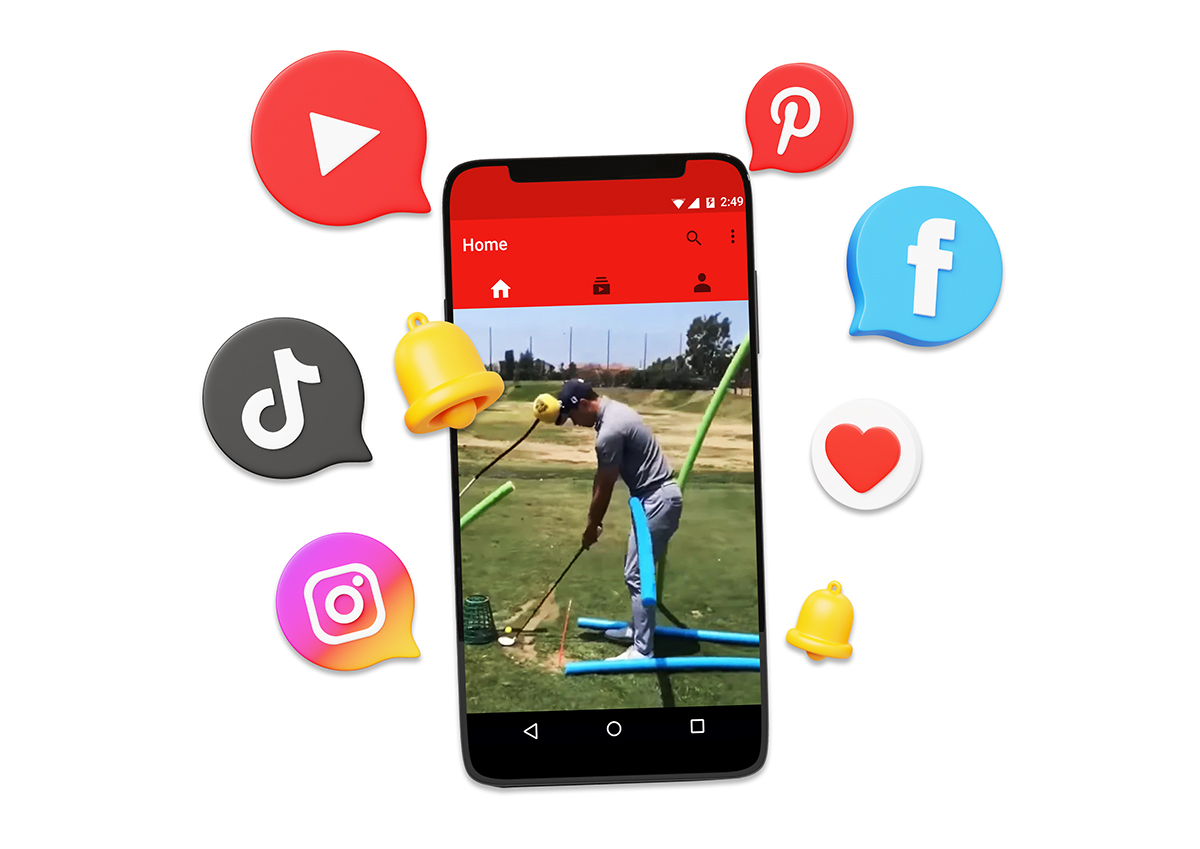
When it comes to golf instruction in 2025, there’s no shortage of places to look for help. In fact, you don’t even have to look very far, just pull out your phone, open TikTok, Instagram, or YouTube, and you’ll be buried under a mountain of “game-changing” tips before you’ve finished your coffee.
For me, though, lessons have always been more of a rare occasion than a regular routine. In fact, I’ve only taken them twice in my life. The first was about 30 years ago when I went from playing steady golf to suddenly shooting a big number like I’d never swung a club before. I drove over to the Practice T, a local range in western PA, and their instructor at the time was Brian Farley and he happened to be available. After hearing my rant about “losing my swing,” he handed me an 8-iron and told me to let it rip. I striped a couple of balls dead straight, then smashed a driver 300 yards. Brian looked at me like I was some prankster sent by his buddies. Eventually, he figured out the problem, I was just swaying my hips way too much. Simple fix, but a lesson I never forgot. The other time was after a strange upper-back injury that turned my once-straight ball flight into an uncontrollable slice. Again, a pro helped me work it out. Strange game, isn’t it?
Those two experiences taught me something important: good instruction can quickly identify what you can’t see on your own. And that’s why this brave new world of online golf instruction comes with the good, the bad, and if we’re being honest, it can get downright ugly out there.

The Good
Social media has broken down the walls of geography. If you don’t have access to a reputable teaching pro (or can’t afford the hourly fees) you can still watch lessons from the world’s best instructors without leaving your living room. Players of all skill levels can explore different teaching philosophies, try new drills, and get an inside look at the routines of Tour players and influencers alike.
You’ll also find content that’s more relatable than your average Golf Channel segment. Instructors share personal stories, behind-the-scenes bloopers, and creative practice games that can spice up your range sessions. It’s bite-sized golf instruction that is part lesson and part entertainment. And, the best part is that if you’re not impressed with what you see, you can simply swipe it away in seconds.
The Bad
But here’s the problem: for every legitimate tip from a PGA-certified instructor, there are hundreds of others from someone whose teaching credentials begin and end with “I’ve been playing this playing this game forever.”
The sheer volume of content is enough to make your head spin. One influencer swears by a strong grip; the next says it’s the root of all swing evil. One video tells you to keep your head perfectly still; another insists you need to let it move naturally. It’s a buffet of contradictory advice and if you try to fill your plate with all of it, you’ll probably leave the range worse than when you arrived.
The danger is analysis paralysis. You start thinking so much about wrist angles, hip rotation, and “shallowing the shaft” that you forget you’re just trying to hit the ball. That mental overload can actually harm your game. The goal is to take what you’re practicing and turn it into something that comes naturally, But, what if what you’re practice routine is garbage?
The Ugly
Here’s where I lean hard on my personal view: online golf instruction often does more harm than good.
Why? Because golf is a game of feel and repetition. You can’t truly fix a slice by watching someone else’s swing in slow motion, especially if that “someone else” has a completely different body type, flexibility level, and tempo.
Without personalized feedback, you could be practicing the wrong move over and over, effectively cementing a bad habit into your muscle memory. Then, when you finally go to a real instructor, their first job will be to un-teach the damage done by your “garbage” internet sessions.

The Bottom Line
Technology and social media aren’t evil. They’ve undeniably changed golf for the better in many ways, making instruction more accessible, connecting golfers worldwide, and even giving everyday players a chance to peek behind the curtain of professional golf.
But golf is still, at its core, a game best improved through hands-on, in-person instruction with a reputable pro. A coach can tailor their advice to your swing, your body, your goals, and they can spot the little flaws a phone camera might miss.
So by all means, scroll and watch a few videos for fun. Steal a drill here or there. But don’t let TikTok become your head pro. In golf, the wrong kind of practice doesn’t make perfect, it just makes bad habits permanent. I learned that the easy way in those two rare lessons I took: one instructor spotted a sway, another fixed a slice. Quick, clear, done. That’s the difference real instruction makes.
Golfer’s Lifestyle Magazine is published quarterly, bringing you the latest stories, features, and insights from the world of golf. To view and read the current issue, [click here].